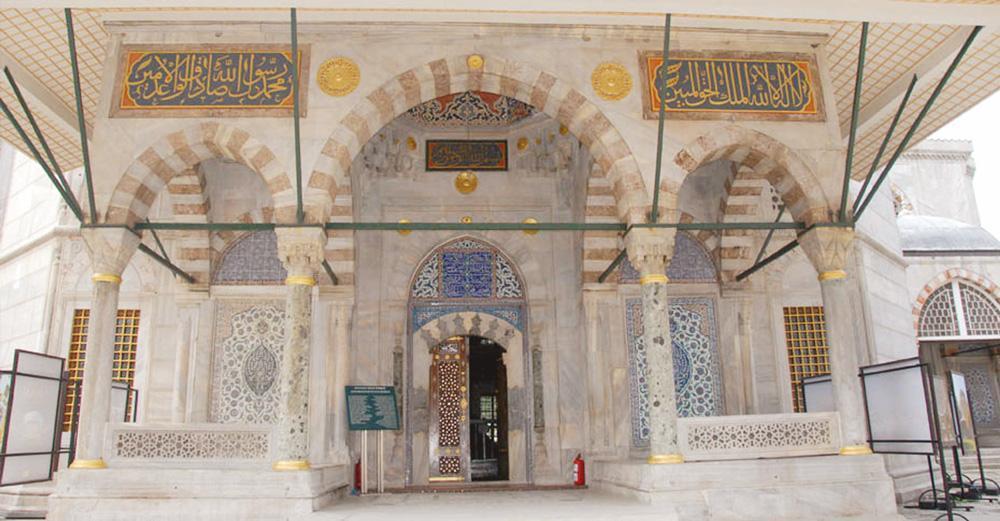Original Hagia Sophia tiles in France
ISTANBUL

A panel of tiles in Istanbul’s Hagia Sophia Museum were smuggled to France in the 1890s and replaced with imitations, according to museum director Hayrullah Cengiz.
“You can see the logo seal ‘made in France, Sevres’ behind the tiles,” Cengiz said, speaking to the state-run Anadolu Agency.
According to the museum director, the Hagia Sophia receives nearly two million local and foreign visitors every year. One of the two panels on the sides of the entrance of the tomb of Sultan Selim II, the son of Süleyman the Magnificent, are an imitation of the original tiles, he said.
“The tomb of Sultan Selim II is the first tomb built in Anatolia. At the same time, it is an artifact of Mimar Sinan [Architect Sinan], the greatest architect in the Ottoman state. The first tomb he had built for a member of the Ottoman dynasty is the tomb of Şehzade Mehmed. The last one is the tomb of Sultan Selim II here,” said Cengiz.
“These tiles were taken to France for restoration in the 1890s by the Frenchman Albert Dorigny, who came to the Ottoman Empire as a dentist. But they have not returned. Instead, imitation tiles had been made in France and had been mounted in place of the original. The original tiles are on the left side. You can see the difference between the two panels. These tiles are the most perfect example of 16th century tiles,” said Cengiz, regarding the 60 tiles on the right side of the tomb.
Cengiz said the Culture and Tourism Ministry had contacted the French Ministry of Culture for the tiles to be returned. “These tiles have been exhibited in the ‘Arts of Islam’ section of the Louvre Museum in France under inventory number of 3919/2-265. They have recently been removed most likely due to complaints,” he added.
Cengiz said the history on the smuggling of the tiles has been displayed in English, French and Turkish at the entrance of the tomb. “What was done was misconduct. This is why we want the world to know about the art theft with these information boards,” he added.
Cengiz said the tombs were closed in 1925 and therefore had been neglected for a long time.
“After the 1990s, the tombs were opened to visitors and began to be restored. The restoration of five tombs here was finished in 2009. It was revealed that these tiles were imitations during the restoration works, as you can easily see the logo ‘made in France, Sevres’ written behind them. When you look at the difference between the two tiles on the right and the left, you can see the beauty of the original ones. The colors of the others have faded and they are all matte because they are imitations, even though they have been there for nearly 100 years. The original ones, which are 400 years old, look brand new,” he said.
Cengiz also said the two panels are made up of 60 tiles and the fake ones were an exact copy of the original. “It is not too difficult to copy them, but as years pass by, they reveal their fakeness more clearly. Not only did Dorigny smuggle this panel, he probably stole many other tiles from Istanbul museums where he had done restorations in those years. We can see it in the documents,” said Cengiz.
The panel of İznik tiles, one of the rarest examples of art from the 16th century, provides information on Dorigny, who took these tiles to France for restoration and returned with the imitations.
















